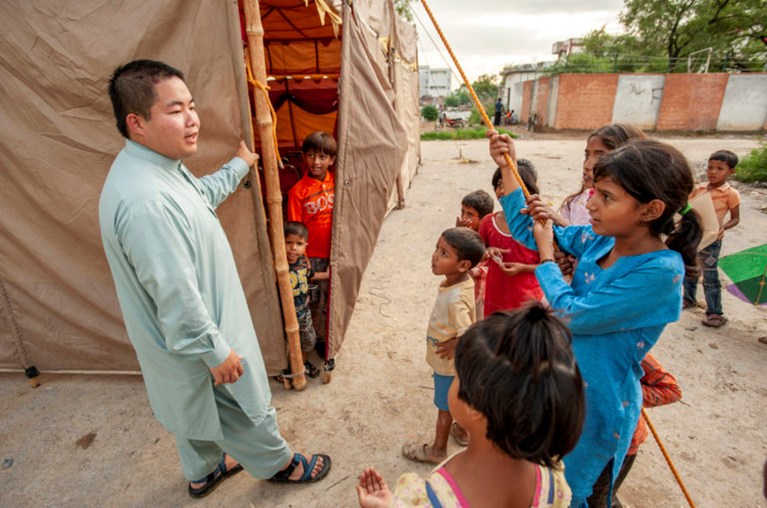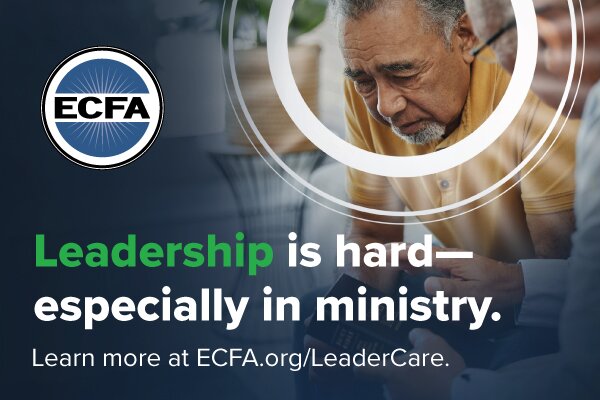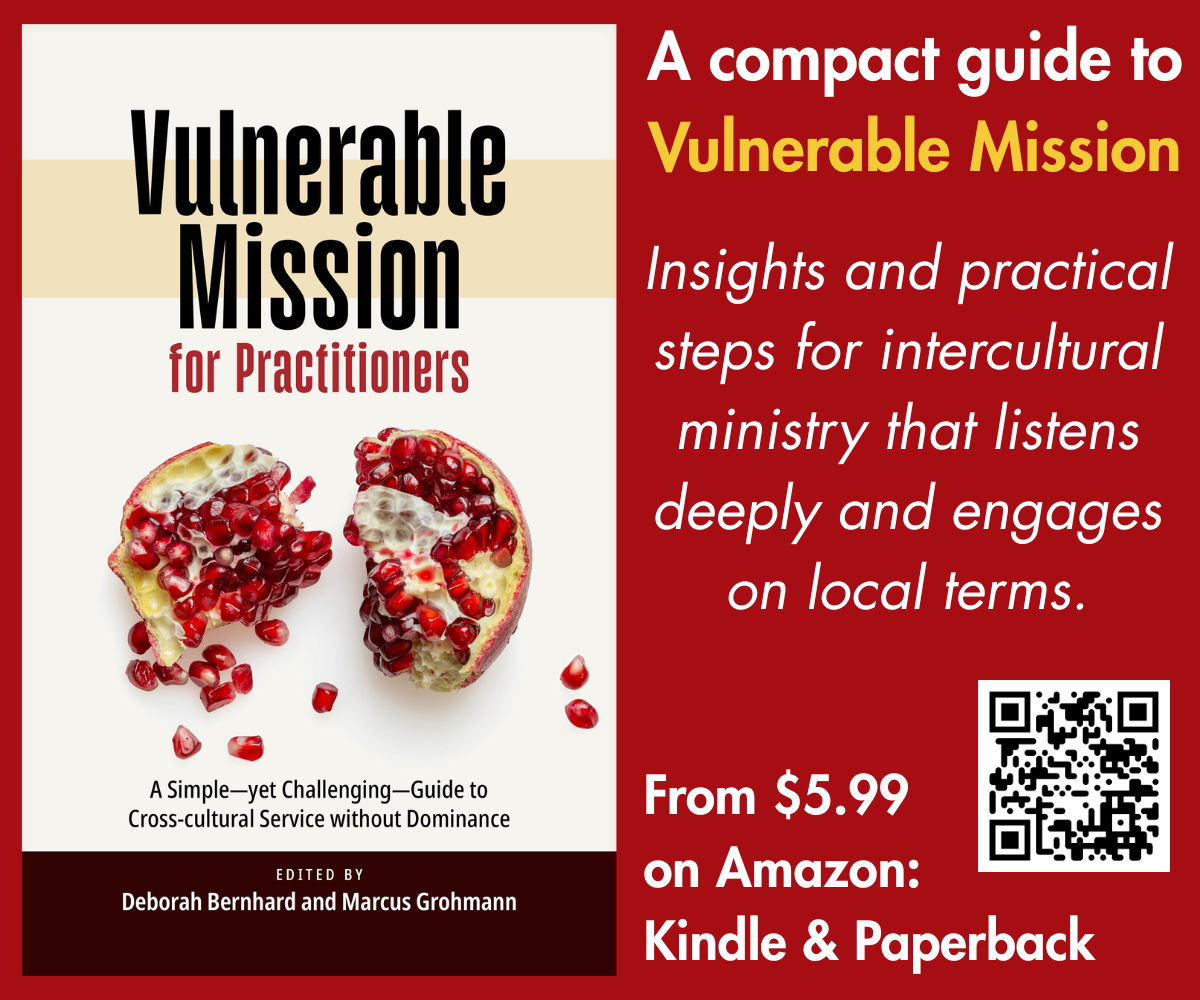EMQ » April – July 2025 » Volume 61 Issue 2

Summary: Based on significant personal experience interfacing between traditional international western sending agencies and new sending nations, Maria Lopez outlines the challenges. These include administrative processes, financial disparity, different ways of doing mission, and the ability of older organizations to change. She raises questions about future direction for traditional agencies.
By Maria Lopez
After more than five years, the South Asian couple we were journeying with decided to pull out from their candidate process. They shared that they had also decided to resign from their local agency and focus on church planting in their own region. Their story was similar to others from similar countries in the Global South who our team had journeyed with. Many have applied and begun to explore the possibility of serving with an international mission organization (IMO), but the challenges and barriers seem insurmountable.
Around the world the fastest growing churches and church movements are in countries that have traditionally received missionaries, not sent them. In Latin America, evangelical Christianity is the fastest growing religion with around a fifth of Latin Americans identifying as evangelical.[i] In Africa, the number of Christians outnumbers the number of those in the Global North, or countries in North America and Europe combined.[ii] In Asia, we are seeing the rise of mission sending from countries in South, Southeast, and East Asia. Many have written about the vast opportunities presented by the growing churches and mission movements from the Global South and Majority World. Mission organizations have excitedly jumped on the bandwagon by creating departments and ministries focused on partnership and collaboration. The hope is that these missionaries would replace those no longer coming from the West.
Global Partners[iii] was launched over a decade ago to respond to the opportunities to partner with churches and agencies in countries and regions not represented by Cross Ministry’s[iv] sending offices. Since then, we’ve seen new missionaries sent to work with Cross Ministry from countries in Latin America, Europe, South and East Asia, and Africa. Volunteers from other countries have also served in short-term mission programs. The number of missionaries sent from two countries grew so much that both countries now have their own mission-sending teams.
Although sending in partnership from Latin America, Africa, South Asia, and some countries in Europe and East Asia is recent for Cross Ministry, sending and receiving missionaries from non-traditional sending contexts is not new. In the 1960s, Cross Ministry established sending bodies in some of the countries they had been sending missionaries to. As a result, missionaries have joined Cross Ministry from non-Western countries. The organization is proud of the resulting diversity.
For international organizations like Cross Ministry, receiving missionaries from the Majority World and younger mission movements offers tremendous opportunities. These missionaries bring a richness and refreshing enthusiasm for evangelism. Their cultures and histories also do not carry colonial baggage that may hinder sharing the gospel. In contexts where the word Christian is associated with Western, workers from non-traditional mission-sending contexts have been able to break stereotypes and present the gospel in ways more easily understood and received by their hosts.
However, challenges persist for younger mission movements working alongside older mission organizations. Over the years of leading Global Partners and engaging with Majority World sending churches and agencies, it seems as if the barriers to mutual partnership and collaboration have increased rather than diminished. These barriers are primarily in the areas of organizational processes, financial disparity, and indigeneity.
Procedures, Processes, and Policies
Older organizations have procedures, processes, and policies that have built up over time. Many of these are tied to history and the strongly held values of the founding members’ cultures. These are seen as necessary for the support of effective missionary sending. But some are simply products of their own time, shaped by the values and issues that were important at the time they were implemented.
It is easier to partner with local agencies that were developed and launched by similar international organizations. They tend to have similar processes and procedures for screening and selection of candidates. However, we have also worked with churches and agencies without a selection and screening process, or who have procedures in place that work for them but do not match our requirements. Where a church or local agency does not have a developed process, it is relatively easy to suggest they adopt Cross Ministry’s screening and application processes. If processes already exist that are sensitive to the local culture, collaboration has not been as straightforward.
When partnering with smaller and younger agencies, partners from the old organization may assume that the older agency has a better procedure in place. This means that procedures that are more sensitive and suited to the local sending context are overridden. For example, Cross Ministry had, over time, developed medical screening that included psychological testing which was difficult to deliver on a local level. In South Asia, one partner pointed out that their mission candidates had to go through training and live in community for two years before they could be recommended for local or cross-cultural mission. Any concerns about their fitness for ministry would naturally surface during this period. They did not feel it necessary for their candidates to go through the tests our screening required. Enforcing the psychological testing can also be unreasonably expensive. In some cases, alternatives have been found to satisfy Cross Ministry’s screening requirements. For some, however, there is a feeling that older agencies’ requirements are heavy, unnecessary, bureaucratic, expensive, and suited for other cultures and contexts but not their own.
Financial Disparity
In several partnerships, economic disparities and differing values concerning finance have been the biggest barrier to serving shoulder-to-shoulder in mission. Consistently, both mission candidates and agencies respond with surprise and shock when presented with the total support figure for a missionary to be sent to serve with Cross Ministry. One South Asian couple hoping to serve in Southeast Asia finally gave up after five years waiting for financial clearance. They had the qualifications, experience, and giftings to serve as effective church planters in rural areas but the high support requirement prevented them from going.
The financial barrier is due to a combination of different factors. A major factor is economic disparity. The older IMOs have budget standards set for missionaries coming from higher income economies. Partners from the Majority World frequently point out items they feel are not necessary or budgeted too high. One partner pulled out budget estimates created by other organizations for missionaries being sent to the same city in Asia. He pointed out that the other organization they have partnered with had cheaper ways for their missionary to learn the language.
On an organizational level, service fees are also considered high compared to local standards. This is because of sophisticated international structures and systems requiring high maintenance. These services provided by international organizations have developed over time and most are seen as necessary by those who have benefitted from them over the years. However, many of the newer missionaries and senders see them as unnecessary. They’ve mobilized, operated, and proven effective on far less. Those of us coming from the Majority World know what it looks like to work with the limited resources available in our home countries. Budgets and plans are developed according to what resources are available rather than projected needs. We work with what we have.
Another contributor to disparity is differences in cultural values regarding how finances are managed and allocated. In one context, for example, a partnering Majority World denomination shared that it would be difficult for them to give missionary support over and beyond what they give as a salary to their senior pastor. There was also a level of expectation that, given that they were willing to offer both their people and finances to the IMO, the latter in turn should be willing to offer something at the table as part of the partnership.
Often, the cost of sending a missionary overseas simply just cannot be justified. Sending one missionary with an international organization could instead support a number of local workers. One couple who felt called to serve in Asia, withdrew their application after much prayer. They shared with me that they found it difficult to justify the amount of support they needed to raise from local churches when so many in their country were struggling. The cost of sending them could be used to support many others serving locally. Some have also shared that they feel guilty when the support needed to send them could be used to support local pastors in the mission area instead. Many missionaries from the Majority World choose tentmaking to overcome this challenge.
One way some organizations have sought to address the challenge of finance has been to offer to top-up or match the support raised by a missionary from the Majority World. One organization, for example, offered to cover 50% of missionary’s support. There are obvious challenges to and questions about this approach. Does this create unhealthy dependency and contribute to disassociation (I will discuss this word later)? Does this approach only reinforce a way of doing and being in mission shaped by the IMO? How does this help indigenous mission movements develop sustainable and self-sustaining ways of supporting and sending their missionaries? What happens when the IMO is no longer able to top-up? Although this approach to address financial disparity has increased the number of missionaries from the Majority World in some organizations, there are longer term repercussions. Barriers are also faced in some IMOs when their values and traditions inhibit them from using this as a strategy.
Another finance-related struggle faced by those who have sought to join Cross Ministry has been increasing challenges relating to international transfers, including restrictions, and tracking of money. Many of the newer mission-sending countries prohibit the flow of finances to an IMO. This is particularly problematic if the organization requires centralized finance reporting. Some of the newer sending countries also have volatile economies. In one instance, a couple joined another mission agency who had simpler finance systems. They were then seconded to Cross Ministry. Frequently, the complexity and inflexibility of the older organization’s financial approach results in potential missionaries not proceeding.
Indigeneity and IMOs
Many younger mission movements are quickly developing new strategies and ways of sending and mobilizing that don’t fit with older mission organization’s systems. For example, most IMOs operate on a paradigm of mission where missionaries raise their full support. Missionaries are dependent on donations from individuals and churches. This can be seen as person driven. That is, the purpose of mobilization is to recruit individuals and the resources to send them. In contrast, many Majority World mission sending churches and agencies are church driven. For example, in Latin America, mission agencies see their core mobilization strategy as equipping and working closely with churches, church networks, and church leaders. If the aim is to see missionaries sent, this process is slower. Instead, their focus is to see missional churches who will, in turn, send missionaries. Some of these missional churches have, over time, worked directly with churches overseas they partnered with themselves. They are sending missionaries and resources directly without engaging with mission organizations. Increasingly, for younger churches and mission movements, the need to partner with an international organization is not perceived as necessary. IMOs seem only to add a layer of complexity, bureaucracy, and cost.
For some Majority World leaders, some of the issues when working with IMOs can be deeply personal. There can be an impression that international organizations come to partner but with a self-serving agenda. A successful outcome of partnership for the international agency is personnel and resources that serve their mission. This can be seen as taking from the local to serve the international. When a local mission leader asks what an IMO is willing to offer at the table in partnership, the reason behind the asking is related to the desire to see mutual partnership. Many Majority World churches are wrestling with their colonial past. Members of IMOs need to be aware of how their ways of relating, being and serving in mission have been shaped by values which may be perceived as colonial. Without this, it can be difficult to really see mutuality and a partnership of equals.
Another story was shared by a Latin American sister who volunteered for an IMO in Southeast Asia during a conference. When they came together to pray and the floor was opened for praying out loud, she began to pray in Spanish. After the time of prayer, she heard a native English speaking missionary share concern that they didn’t understand her prayer. As I discussed partnership, she shared with me her story and asked for me to share with “the gringos” that though they prayed in Spanish, they were brothers and sisters in the Lord. The barrier to serving in an IMO is that for most, English proficiency continues to be a requirement for legitimacy and survival. Nevertheless, so much of people’s culture and identity is linked with the ability to express ourselves freely in our native tongue.
Those coming from younger mission movements and churches have recent histories which impact the dynamics between cultures. It would be naïve to assume that the experiences and histories of those from the Majority World do not inform views on the various issues. For example, how finances are handled can evoke complex emotions and perceptions. For those coming from lower income contexts, inequitable fees paid to an IMO may be seen as similar to the tributes paid by their countries to a colonizing power. There is also the matter of how decisions and policies are made. Often, organizational decision-making processes are shaped by founding members’ cultures and are not sensitive to those from minority or less powerful cultures.
Although international organizations have accepted non-Western colleagues into their mission, the experience can be that they have to fit standards and the mold created for those the mission was originally founded for. This starts with the screening of candidates, continues to the organizational processes, training, and extends to expectations of missionaries. Those coming from the Majority World feel that they have to change to fit the mold of the dominant culture in order to survive and thrive as missionaries. Many do not last. After a period of time, they find it is easier to leave and work with others of similar cultural backgrounds. Where older mission agencies have set up local sending offices, after many decades, the question also remains – how much of these are really indigenous and representative of the cultures and churches it seeks to mobilize and serve with in mission? How much agency do local representatives of the IMO have?
The cultural challenge shared by some partnering agency leaders has been that missionaries joining IMOs begin to develop higher standards of living and become detached from the realities of their sending cultures. One mission leader from South Asia told me the word he uses for this is disassociation. I asked him, “How do we then avoid missionaries from the Majority World disassociating from their sending churches and agencies?” He gave me a smile but no answer. The question was a complicated one which we did not have enough time for. My interactions with other mission leaders of smaller agencies nevertheless helped me to see that many new sending churches and agencies are wanting to have a greater say in decisions concerning their sent workers. They are pushing to be more involved and their inclusion in decision making helps those they send from disassociating from their sending culture and context.
With more churches and agencies in the Majority World strengthening their ability to send in mission, the question does arise, “What value does an international organization like Cross Ministry add to younger mission movements and sending churches?” Because of its long experience and identity in open access countries like Thailand and the Philippines, Cross Ministry has the structure and stability to receive and support missionaries in these countries and help those coming from the Majority World. Digital world and global networks have, however, made it also easier for Majority World churches and mission movements to find innovative ways of going, sending and receiving. Many churches from the Majority world, for example, also see part of their church planting strategy as encouraging their members to go overseas as tentmakers and marketplace workers. Once they are in the country, they begin to work together to see a church planted. Increased connectivity is also enabling indigenous churches and organizations to connect directly with one another, bypassing IMOs present in their countries. The question, then, for traditional mission agencies like Cross Ministry is relevance. What do we have to offer which younger, more nimble, and innovative agencies cannot do? For smaller mission agencies seeking to send workers to a country it has never sent a worker to before, partnering with Global Partners has been a helpful step. The challenges have been, however, reciprocal in that Cross Ministry lacks experience in working with people from these cultures. Longer term, strains continue to develop due to structures, systems, and organizational cultures that are not designed for diversity and all the complexity that comes with polycentric mission.[v]
New Wine and Old Wineskins
Increasingly, the challenges encountered have felt insurmountable. IMOs like Cross Ministry have continued to operate, sustaining old wineskins (cf. Mark 2:22). Efforts to partner sometimes seem futile. They are limited and hindered because of inequities and disparities related to finance, culture, economics, history, and values.
It is nevertheless very apparent that God is at work in the younger mission movements. Looking ahead, I’ve pondered over what the role of the international agency is in global mission. It can no longer assume it is the sole mediator and expert in cross-cultural mission. Global migration, digital networks, and complex systems will continue to create tremendous opportunities that old wineskins will not be able to contain. There are diaspora churches in least reached areas. The number of believers using their professions and skills as a platform for gospel bearing in restrictive countries continues to increase. Countries that continue to receive missionaries, have strong and established churches that are themselves planting churches, mobilizing, and sending in mission. Many churches and denominations are determining that they do not need an IMO. They are finding their own ways to network, partner, and send directly to churches and receiving missions overseas.
For the way forward, perhaps it is necessary for older mission organizations to accept that their old wineskins cannot hold new wine. The only response is to let go, relinquish control and their sense of authority, and release indigenous missions to tread new paths of sending and going in mission.
Instead of seeking to control, the role of the IMO must be to strengthen indigenous missionaries and groups through the sharing of resources, training, connections, relationships, and experiences. The IMOs can also serve as a Barnabas for younger mission movements, to open doors and provide safe spaces to create and develop new wineskins for the new wine. There is a level of dying to self for the IMO with this model. It becomes a servant to the local and the new senders for the sake of the gospel and God’s glory. All this also assumes embracing the possibility of growing smaller and letting go of power, services, and resources. It may also mean death to some older organizations so that newer mission agencies and local churches take their places. This could be a path of discipleship for some organizations through which God’s glory is brought to the whole earth, as the waters cover the sea (Habakkuk 2:14).

Maria Lopez has served in mission for more than twenty years, living and serving cross-culturally in Europe, North Africa, the Americas and Asia. She holds degrees in biblical and intercultural studies as well as mission leadership. She has also been involved in global networks, observing and working closely with others passionate about partnership and indigenous mission. She is currently based in Asia leading a global team.
[i] “Evangelicals May Soon Rival Catholics in Latin America.” The Economist, April 5, 2023, https://www.economist.com/the-americas/2023/04/05/evangelicals-may-soon-rival-catholics-in-latin-america.
[ii] Gina A. Zurlo, and Todd M. Johnson, eds. World Christian Database (Brill, 2025).
[iii] This is a pseudonym to protect the organization and individuals involved.
[iv] This is a pseudonym to protect the organization.
[v] See Allen L. Yeh, Polycentric Missiology: Twenty First Century Mission from Everyone to Everywhere (InterVarsity Press, 2016).
EMQ, Volume 61, Issue 2. Copyright © 2025 by Missio Nexus. All rights reserved. Not to be reproduced or copied in any form without written permission from Missio Nexus. Email: EMQ@MissioNexus.org.







Responses